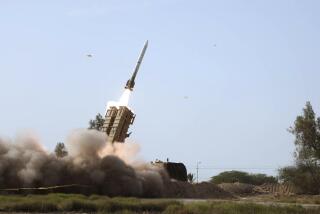Bad Reason to Rush Missile Plan
- Share via
America’s European allies remain properly skeptical about a national missile defense system for the United States, fearing it would wipe out key arms control agreements and prompt Russia and China to build more and more missiles to try to keep their strategic forces credible. But the Bush administration is determined to make a swift start on a system, partly because it’s eager to have a foundation in place before the 2002 elections, when control of Congress could pass to the Democrats.
That’s not the soundest of reasons for hurrying into a commitment whose ultimate costs could exceed $60 billion and whose international consequences could be enormously troubling. It doesn’t help either that the administration seems ready to plunge ahead without a consensus among missile defense proponents on what kind of system to build. The Clinton administration’s plan was for a force of 100 interceptor missiles based in Alaska. Republicans have criticized that as inadequate to the threat they perceive, even though the original rationale for an antimissile system was to defend against a small-scale attack from a rogue state or--even more implausibly--from terrorists. Support for building a larger system implies a belief that the threat is much greater, meaning that it could come from Russia or China.
The effectiveness of even a limited land-based system--most critically the ability of a “kill vehicle” released from an interceptor rocket to identify, strike and destroy an incoming warhead--has yet to be proven. Not only must a kill vehicle be able to score a direct hit on a warhead but it must be able to distinguish between a true warhead and the decoys that would surely be released. The proposal for a sea-based system hinges in part on adapting and improving existing technologies, which would probably take more than a decade to achieve. An effective space-based system for destroying incoming warheads--”Star Wars” redux--is even more technologically remote.
The most wasteful approach would be investing money to proceed along all three tracks at once. The Clinton administration budgeted $2.8 billion for continued work on an antimissile system. Given the state of the technology, that’s adequate for now. Until there’s proof that a system will work, no grand commitment to building one should be made.
More to Read
Sign up for Essential California
The most important California stories and recommendations in your inbox every morning.
You may occasionally receive promotional content from the Los Angeles Times.










